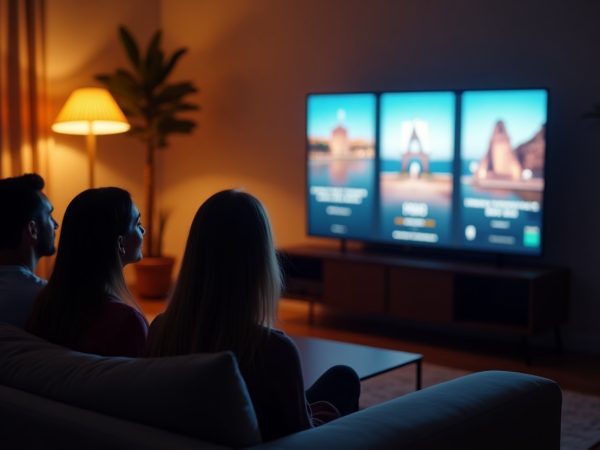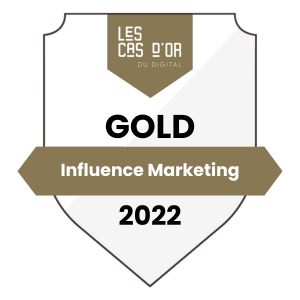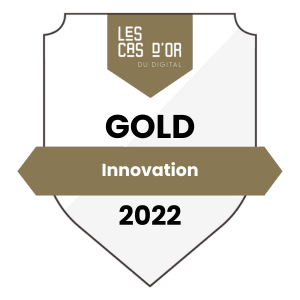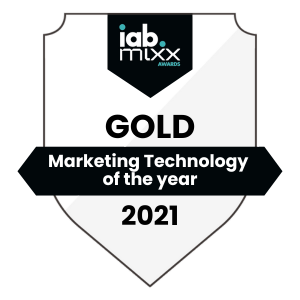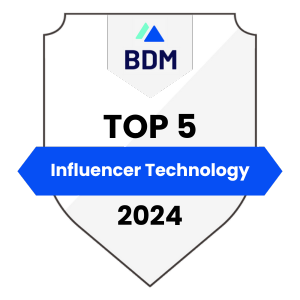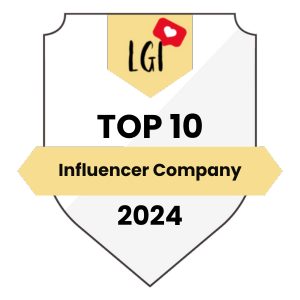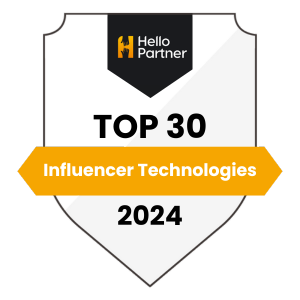TikTok and influencer marketing – a match made in heaven?
Here we are: the year is 2020 and you consider yourself somewhat of a marketing savant. You adapted well to the big changes in the marketing landscape: YouTube and Instagram don’t hold any secrets for you and you even got the gist of Snapchat. So far, so good. Then TikTok entered the social media realm and tapped into the newest generation of media users: Gen Z. Before you start panicking, let us walk you through the basics of the most recent player in the social media game and show you how you can use it in order to optimize your influencer marketing activities.
A brief history of TikTok
The much talked-about video app was created in China and, after purchasing Musical.ly in 2018, made its first strides on the international markets. Allowing users to generate short dance, lip-sync, comedy, and talent videos, it quickly became hugely popular amongst youngsters and celebrities alike. One of its strengths is that you can enjoy the content instantly. It’s not even necessary to set up an account in order for you to watch the funny videos. Being so easily accessible, full of original content and tapping into a new market, TikTok seems like a new source for marketers like yourself to tap into. With currently more than 800 million active users it’s hard to ignore its presence. So let’s take a closer look at the app that is all the rage among Gen Z and increasingly appealing to other generations as well.
Why TikTok truly is something different
Whether you want to set up an account right away or first want to take a sneak peek, opening the app instantly shows you content. Easily browse through trending videos on the For You-page before you even set up your account. Most of the videos you will encounter can be seen as ‘normal creativity’. This means that behind its apparent spontaneity, TikTok is in fact an extremely standardized platform based on mimicry and repetition (meme).
Pay particular attention to the trends and hashtags that will inspire you to make videos within a specific theme. Unlike on Instagram, hashtags are not only used to indicate a certain category the video belongs to, but is more often used to promote challenges that come with their own moves, dances, video effects or sounds. These challenges can be launched by every TikTok user, brand (we’ll come to that later) or even the TikTok team itself. Use the abundance of tools available on the app to create and edit your videos with filters, effects and music and upload them to the app. Funny, skit-like videos do especially well, but you can also display your cooking talent or give fashion advise. There really is something for everyone on there. What sets TikTok apart from the known social media giants is that it’s open, genuine and positive. Whereas influencer darling Instagram is all about showing the prettiest outfits, brunch plates and #selfies, TikTok is more about inclusivity and showing the real side of life. These factors are important to keep in mind when you want to take it to the next level and use TikTok for your influencer marketing campaigns.
TikTok during Covid-19 crisis
With most of the world being in some degree of confinement in March, the amount of downloads of the app increased by 65 million in just that month and 315 million downloads in the first quarter of 2020, the best quarter ever for any app. With this increase came also a broadening of the demographic. Not only Gen Z seem to use TikTok during times of boredom and quarantine, but also Millennials and even older generations seem to have found their way to the newest app on the block. This subsequently also created a brand new target audience for brands, agencies and influencers alike.
Why you should consider using TikTok as an influencer marketing tool
An Algorithm that rewards creativity
Need some more convincing that it’s time to get TikToking? Going viral or gathering a large following on a new social network seems like a difficult feat, but luckily the newest player in the social media landscape has certain characteristics that facilitate just that. From a creator’s point of view, the app allows you to quickly and easily create fun and informative videos with its integrated tools such as filters, video effects, sound effects, etc. Even the youngest (or oldest) users can post content within a few clicks. Of course, content is nothing if not seen by a wide audience. As we all know by now, this is not always easy to achieve. Entering a new platform with very few or no followers, it has been proven to be difficult to reach a large audience for your content. In comes TikTok: unlike other social networks, content can create buzz and have millions of views very quickly no matter how many followers you have. Content takes precedence over the rest (as TikTok says “talent is rewarded”). Although the exact algorithm isn’t publicly known it is believed by experts that videos are shown by a person’s interests / last interactions, its geolocation and the engagement of the videos. This last part of the algorithm is based on a point scale system and points are given to the different interactions such as rewatch and completion rate, shares, comments and likes. This means that you can become a successful brand or influencer overnight. (Staying at the top is, as usual, a different story and requires you to keep up the good content).
Influencers’ unique visibility and engagement
Not only is your content more likely to be seen by a large audience, it also appears that the engagement of the videos on this app is higher than on videos on for example Instagram and YouTube. Besides this, the average engagement of an influencer is also almost always higher on TikTok. This is clearly illustrated by the fact that TikTok users who were originally influencers on other social media channels seem to be successful instantly on TikTok. Take for example @TiboInShape. He is active on YouTube, Instagram and TikTok and has the largest amount of followers on YouTube (7.3M) and an engagement rate of 9.22%. On TikTok however, he has half the amount of followers (3.6M), but there he boasts an engagement rate that is double the amount of on YouTube (18.5%).
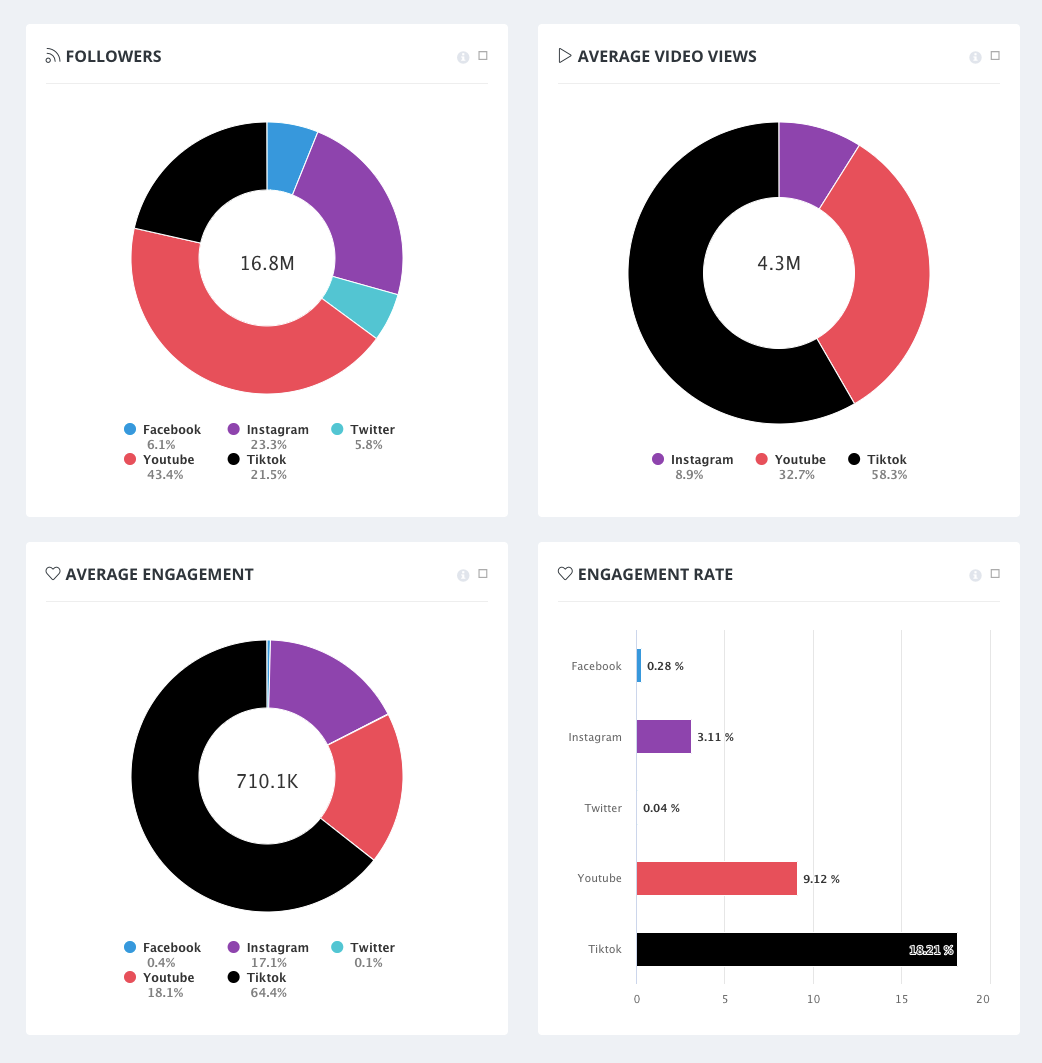
Another influencer originally coming from YouTube is @normanthavaud and his statistics show a similar trend as described previously. His large following on YouTube (12.1M) compared to that on TikTok (740K) would normally be reflected in the engagement rate and video views, however, this is not the case. The amount of video views on TikTok (3.7M) approaches that same metric on YouTube (4.3M) with a much smaller audience. Looking at the engagement rate specifically, we see that this is almost twice as high on TikTok (15.6%) compared to that on YouTube (7.2%).
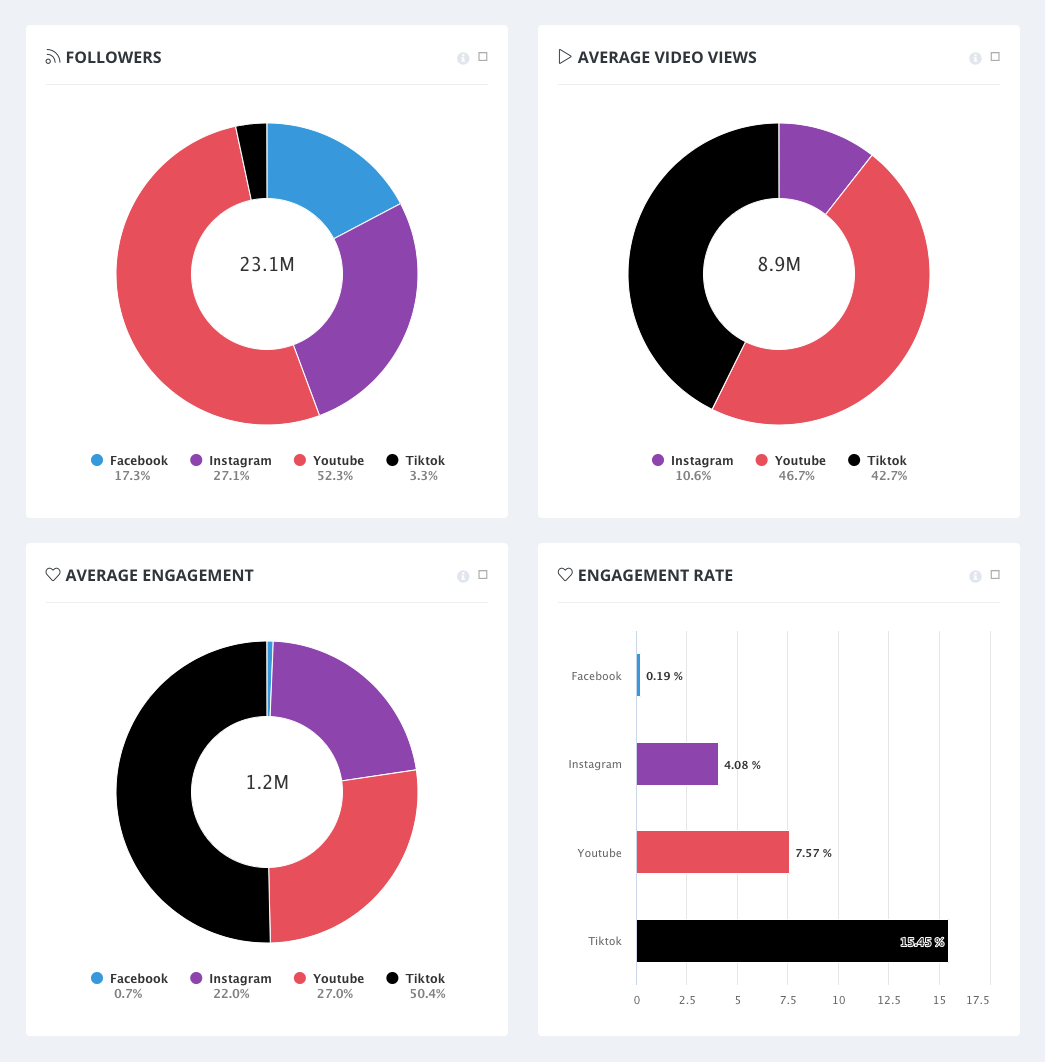
We can see a similar development for @loisbeekhuizen whose total amount of followers is divided into 38K TikTok followers and 86K followers on Instagram, but her engagement rate on the latter is an actual 5% more than on her main social account which is (or used to be) Instagram.
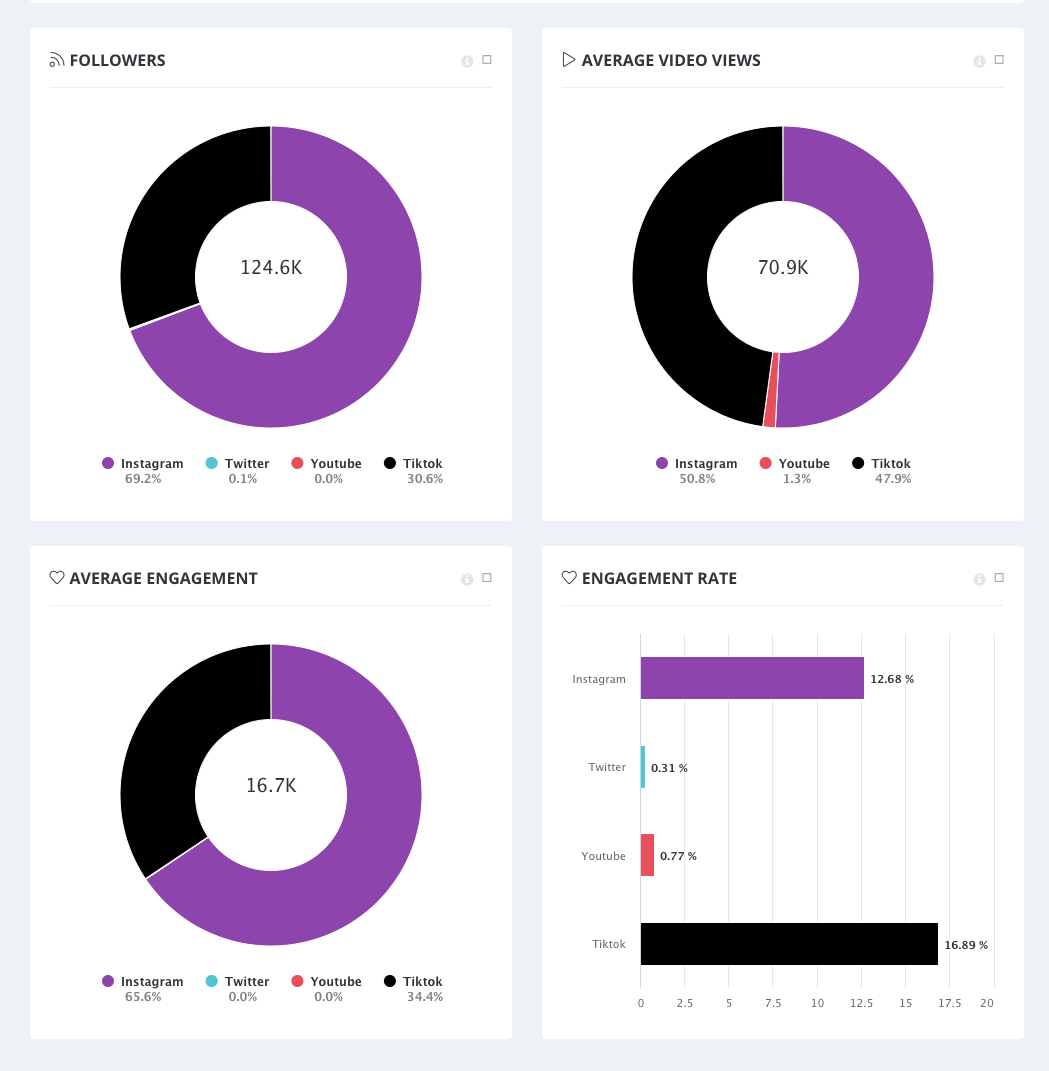
Turning views and engagement into conversions
Now that we’ve seen that TikTok is really effective when it comes to exposure and generating interaction with users it is time to see how to turn all of this into feasible results for your brand. Recent developments show that TikTok is also very useful when it comes to generating sales. A campaign launched in April by iconic jeans brand Levi’s didn’t only use influencers by asking them to customize their favourite pair of jeans, but also made several promo codes available for its audience. On top of that, they also exclusively tested a ‘shop now’ button which allowed users to directly purchase the customized jeans. This proved to be a very effective campaign as Levi’s has stated that it increased their web traffic, engagement and above all, boosted their sales. As we speak, this feature is not yet integrated on the app, but developments, like their amount of users, seem to increase quickly.
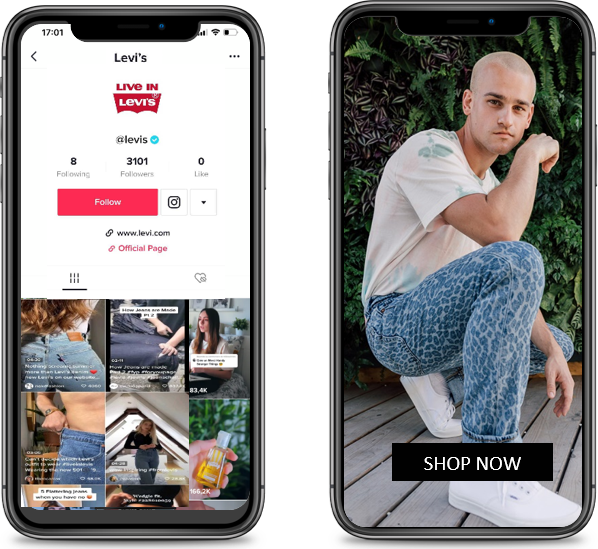
Influencer marketing on TikTok: learn from the best
OK, have we convinced you? Now let’s take a look at how you can take full advantage of TikTok when incorporating it into your influencer marketing strategy. Whereas you might be inclined to simply copy your existing strategy for the other channels, it is important to keep in mind the characteristics that set apart the newest addition to the social media family and adopt your strategy accordingly in order to make your campaign as successful as possible.
TikTok makes you look at influencer marketing from a new perspective as its public is much more critical when it comes to advertising. Gen Z is a generation that is looking for authenticity and originality and has found a partner in that with TikTok. Their influencers do work with brands, but the way they promote it is very different from how this happens on Instagram for example. On TikTok, it’s best to give influencers (complete) freedom when it comes to content. They know their audience best and want to make sure that their sponsored video still peaks their interest and doesn’t come off as fake or too staged. It is therefore important that you do your research well to make sure the influencer doesn’t only have a large following, but also is known for creating content that is in line with your brand and of course target the right audience. Once you’ve found a good collaborator in an influencer it is a big step towards establishing a long-term relationship, one of the trends for this year described in our other blog post.
Let’s take a look at brands that have already successfully incorporated TikTok into their influencer marketing strategy and some examples of their campaigns. Ready to get inspired?
Join an existing challenge
There are multiple ways of running an influencer campaign on TikTok and perhaps the easiest and most efficient way is to join an already existing hashtag challenge. French cosmetics brand and Stellar client Clarins was quick to jump on the TikTok bandwagon with @myclarinsofficial, their product line aimed at a younger audience and created a video with the then trending hashtag #faisPasser. This video included two influencers passing on several items from one screen to another and generated 2.8 million views.
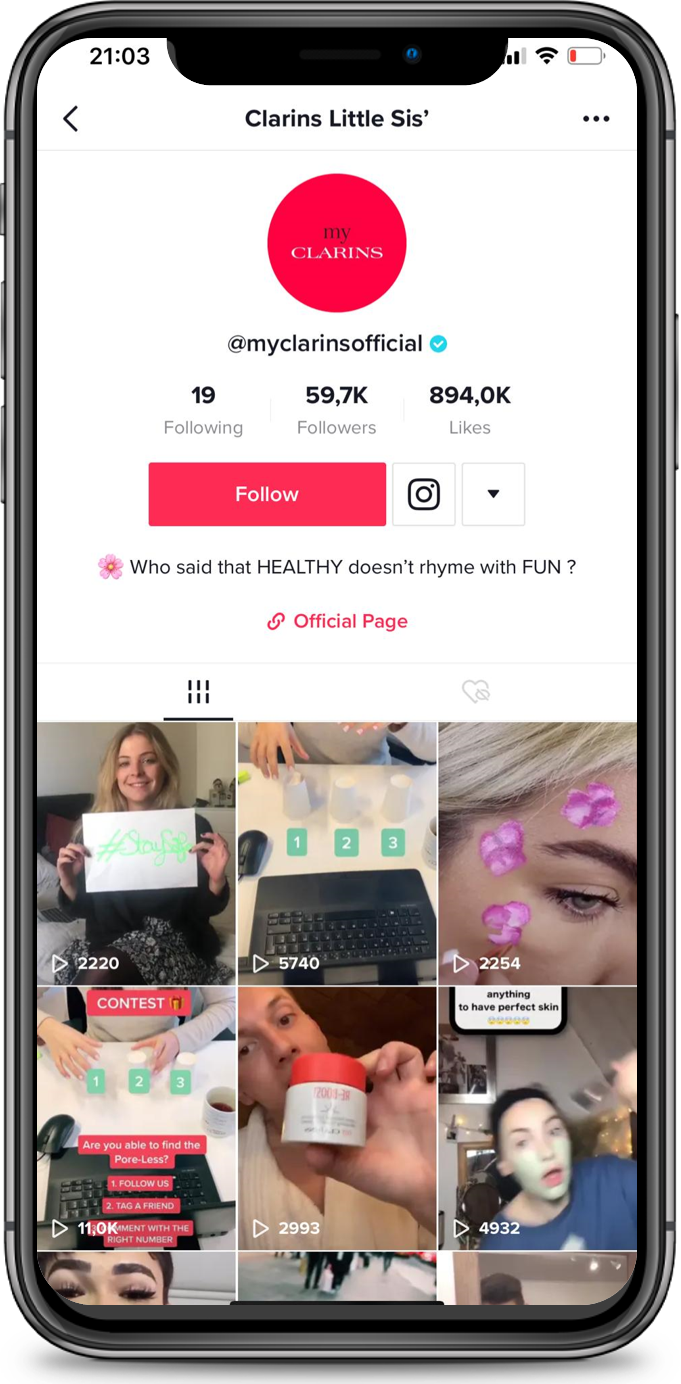
Launch your own challenge
Are you more the creative type and do you want to see you thousands (or millions) follow in the footsteps of your own challenge? Then launching your own challenge is the way to go. Cookie giant Oreo introduced their #OreoChallenge around the world and it was picked up by the likes of mega-influencer Chiara Ferragni whose video was seen 19.4 million times, received 1.3 million likes and 18.1k shares.
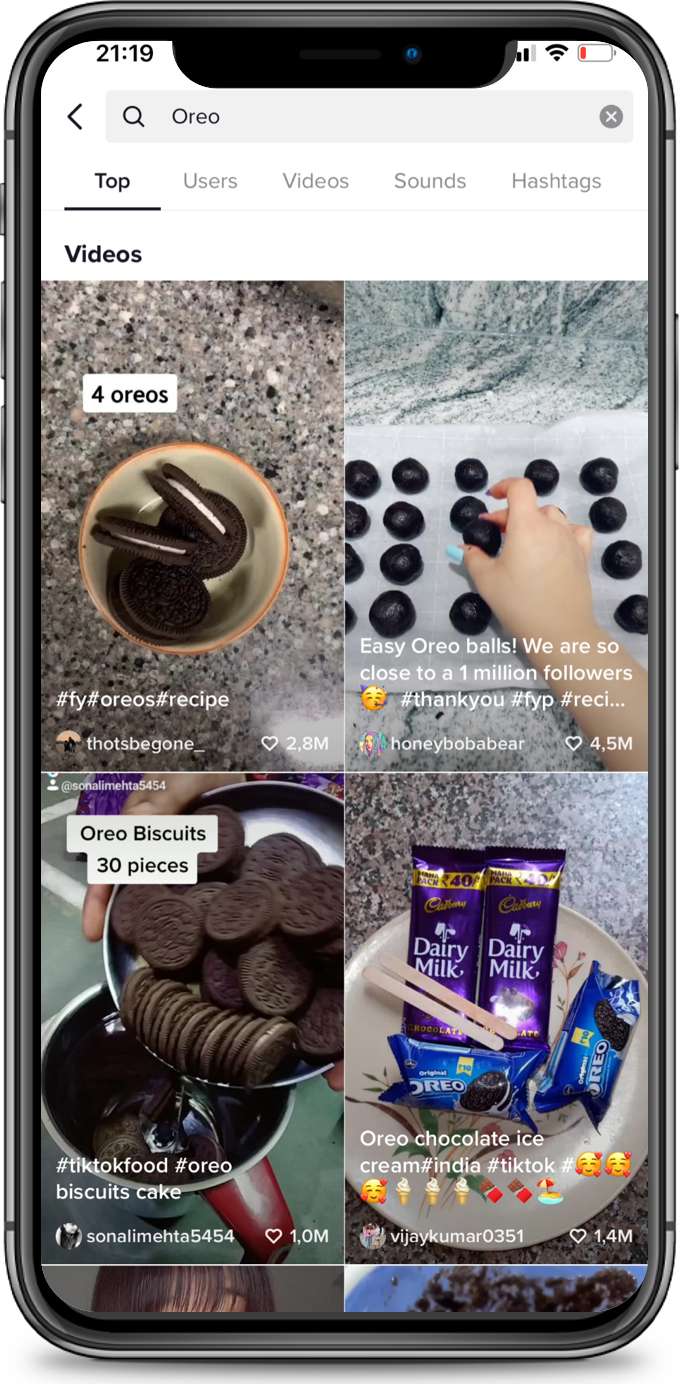
A variation of this challenge was introduced by Oreo and Stellar in Belgium and the Netherlands and was done by influencers such as Carolien Karthaus-Spoor ( 109K followers) and Aurelie Vandaelen (761K followers). Using the hashtag #stayhomestayplayful, it also spoke to people especially during the quarantine that was in effect in many countries and gave them a bit of distraction during difficult times.
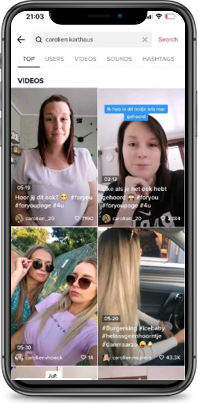
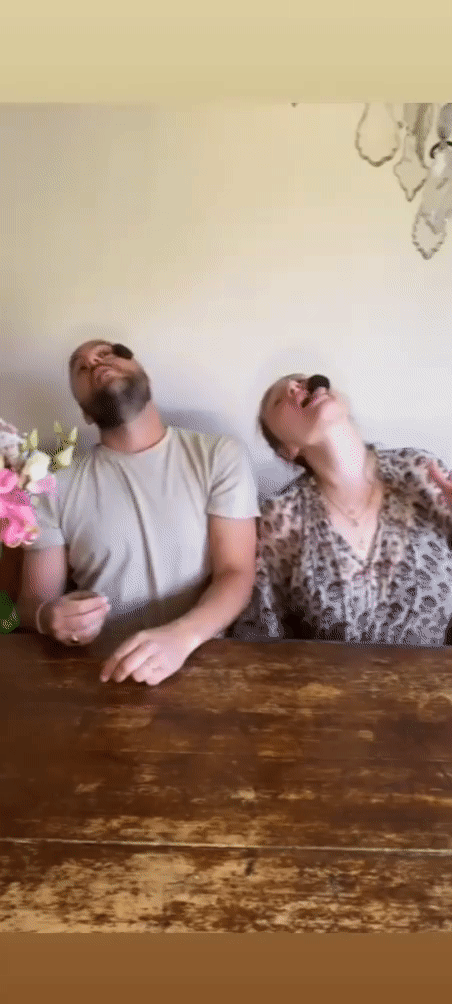
Combine your own challenge with advertising
If you want to reinforce your challenge with advertising formats then you can do so by choosing one of the currently five available ways to do so:
• Top View. A long- format video offered at the opening of the application that directs the user to the brand’s account.
• Brand takeover. A 3-5 second video or JPEG for a dynamic or static display. Can link to brand website.
• In-feed ad. Up to 60- second long video that appears on “For you” page and triggers engagement from users.
• Branded Hashtag challenge . The challenge launched by a brand on video is highlighted and will go into a carousel on the trend discovery screen.
• Sponsored effects. This allows a brand to create its own filters, stickers and special effects. All branded according to your brand identity.
TOP VIEW
BRAND TAKEOVER
IN-FEED ADS
HASHTAG CHALLENGE
BRAND EFFECTS
One major fashion brand that did this is Guess who used multiple advertising formats together with launching their own #InMyDenim challenge. This challenge invited TikTokers to show their glow up with their favourite Guess denim pieces. The American jeans brand chose to use influencers to promote the challenge while simultaneously using several of the advertising. The challenge generated 50 million views showing the success of the combination of influencer marketing and a more ‘traditional’ advertising format.
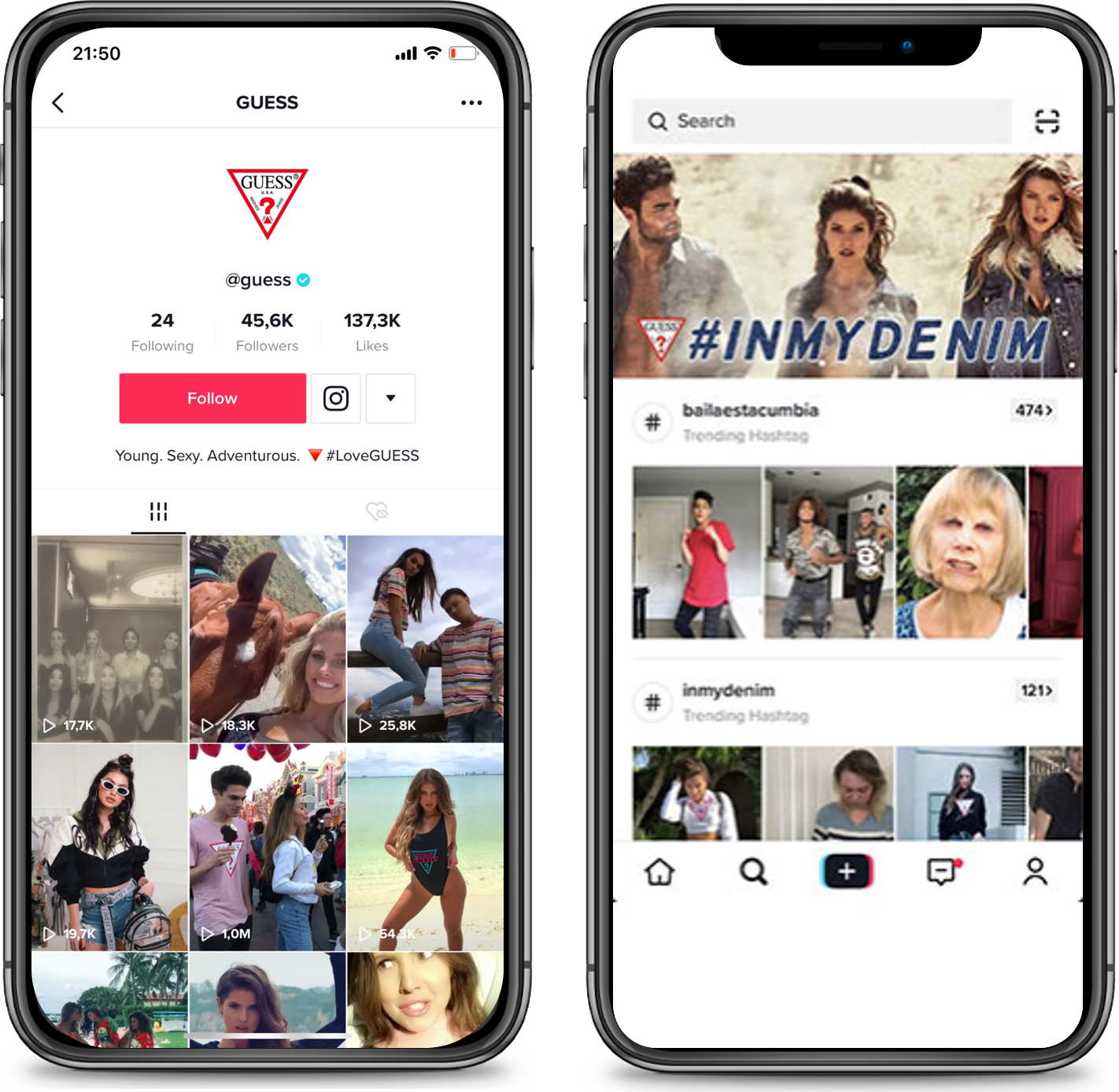
Product placement
Unconventional and new as it is, that doesn’t mean TikTok is immune to the more known ways of influencers collaborations. Makeup brand Too Faced used TikTok influencer Kristen Hancher (24.1M followers) to promote their newest mascara. She did so by showing in one video her before and after look using their mascara. The video was seen by 1.9 million TikTokers and ensured Too Faced of the coverage they wanted for the launch of their newest product.
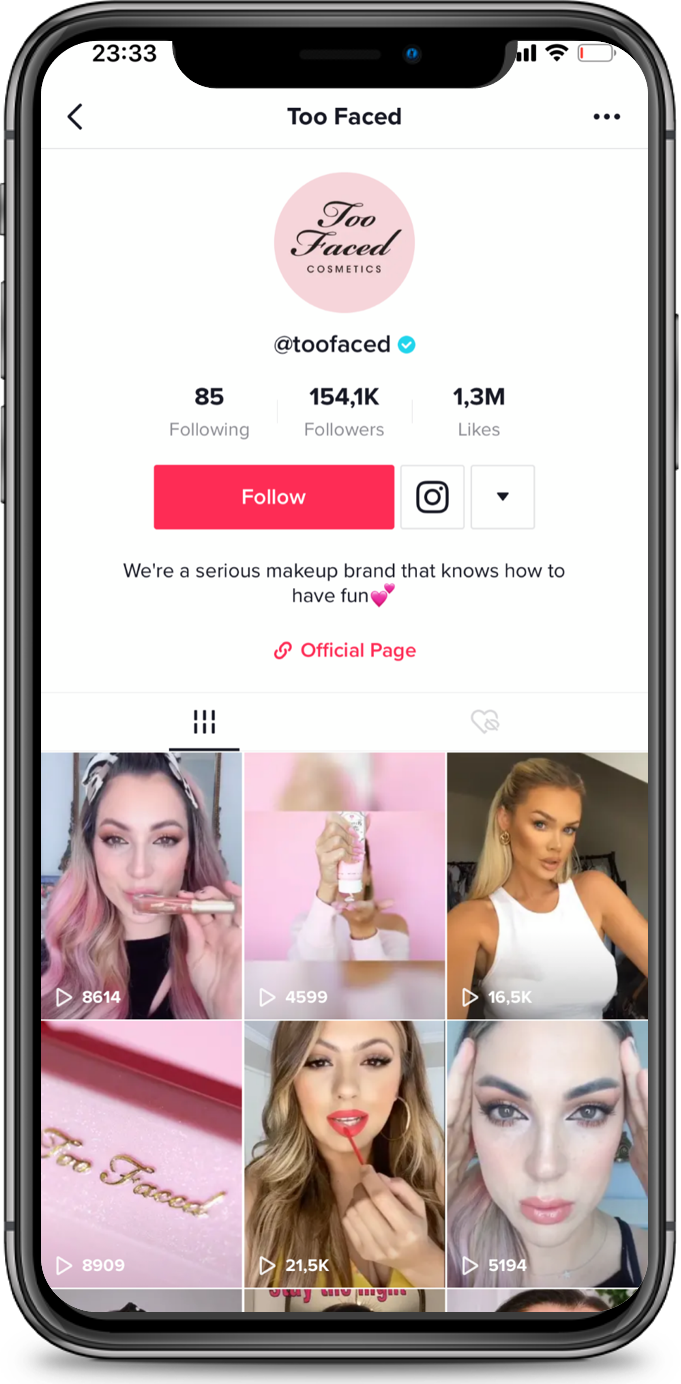
Another tried and tested recipe is the unboxing of (luxury) products as is shown by Milkywaysblueyes who unboxed a precious Chanel bag giving her viewers a taste of that iconic Chanel packaging and ultimately the bag.
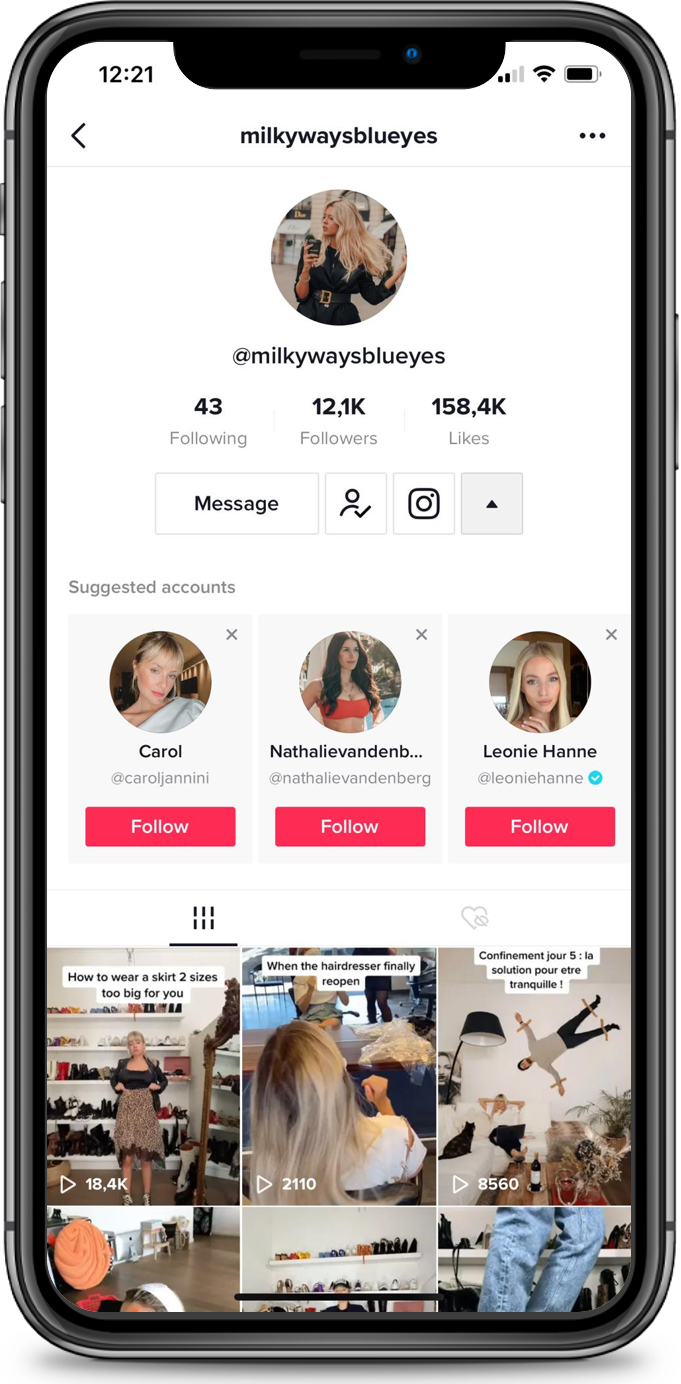
Branded filters
If you’re looking to promote your brand more so than a specific product then why not consider creating your own branded filter. McDonalds France created a filter helping the users to choose which McDonalds product they were. Creating a filter allows your followers and others to interact with and promote your brand in a fun and genuine way and who doesn’t want to know if they’re a Big Mac or more of a Filet-o-fish?


From completely new ways of collaborating with influencers to golden oldies – TikTok is a platform that will surely make you rethink your strategy and approach to influencer marketing in 2020. What hasn’t changed though in influencer marketing, are the metrics. Don’t just go by the amount of followers, but make a thorough analysis of the influencer and its audience and based on that determine if this could be a lucrative partnership. With the implementation of TikTok on the Stellar platform, you can now add TikTok influencers to your Influencers, analyse their metrics and decide whether or not they’re a good fit for you. We are excited about this new addition to the Stellar family platform and we’d be more than happy to introduce you to each other. Drop us a note and we’ll be in touch!

